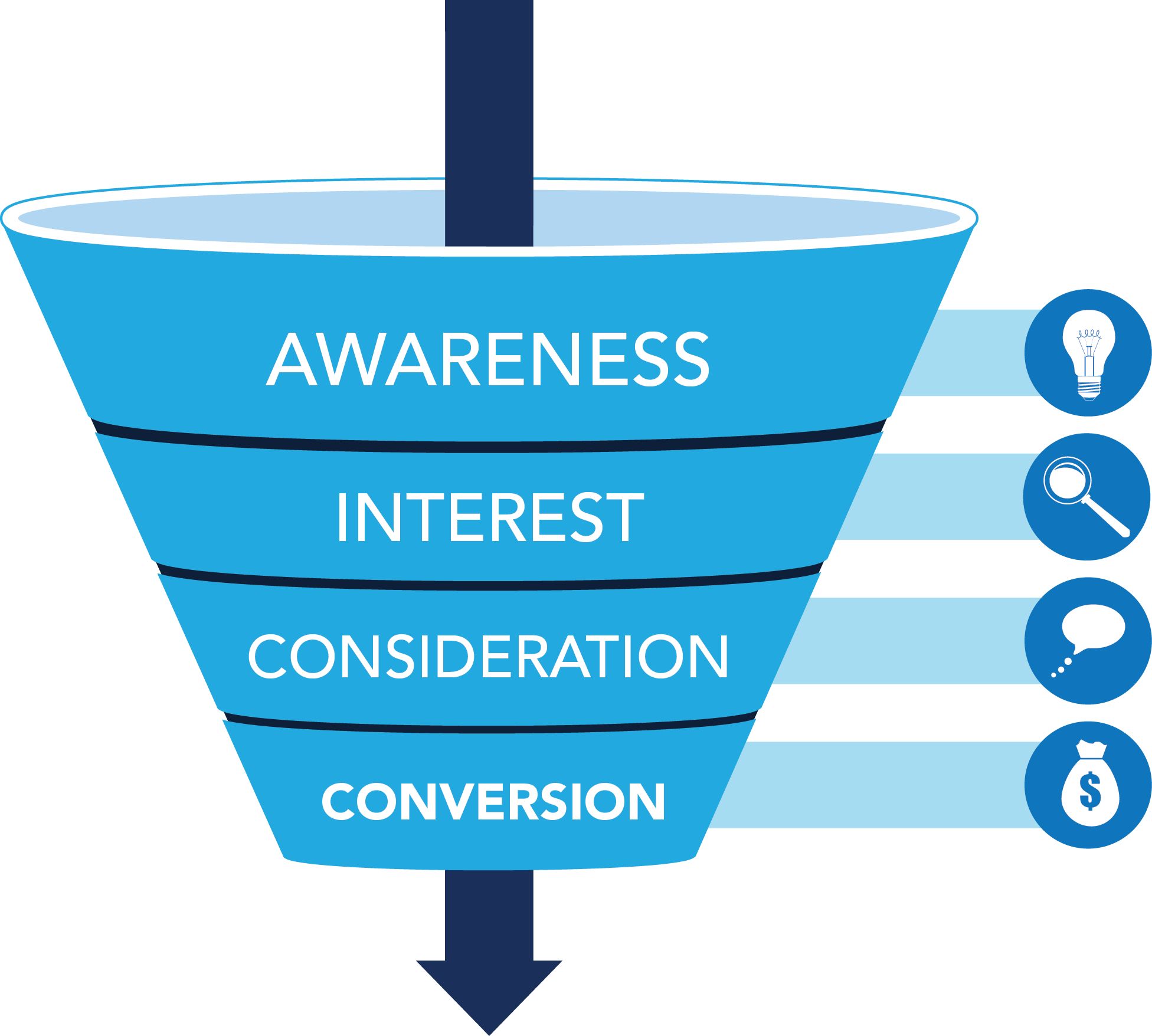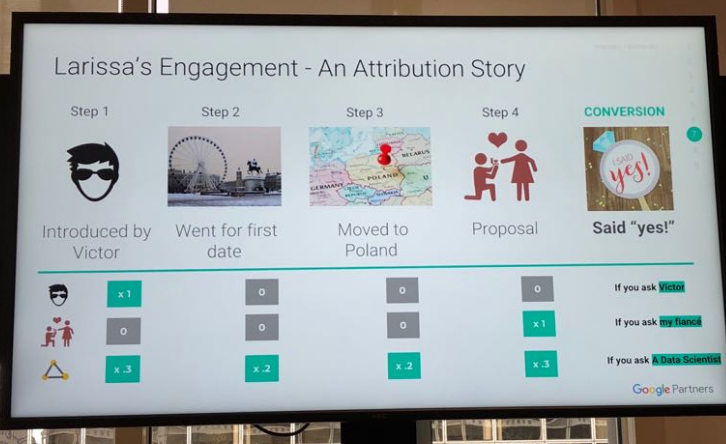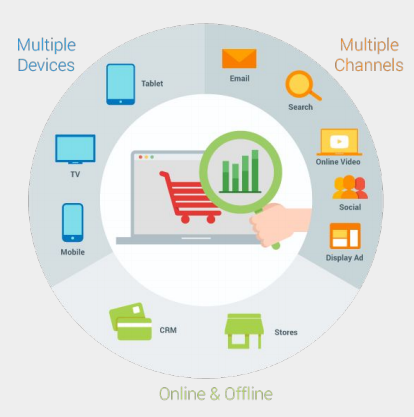Hot Topic
To start thinking about attribution, ask yourself: Have I ever booked a holiday in one sitting?
Personally, I have never sat down and typed in ‘holiday to Hawaii,’ and booked the first package holiday that appears on Google straight away. And it is not likely that you have either.
 For these life decisions; holidays, a new car, life insurance for example, it takes deliberation and thought over time. The journey from the original idea “shall we go on a weekend away soon?” to booking an Airbnb or deciding on a spa trip has multiple stages to it.
So, to the point. I am asking about your holiday booking habits because attribution ultimately asks: which was the most valuable stage of that customer’s buying journey? Some may argue, it was when the customer pressed 'book holiday'. Or when they essentially 'paid'. Others may argue that when the user re-visited the travel website to get their partner’s opinion, and their partner agreed, that was the defining moment in the sale. Or one can equally argue that it was the holiday reviews on a 3rd party website that swayed their opinion to book.
This journey is interesting to us digital marketers and to you the advertiser. What stage is most valuable to us? The process from a person researching, to them eventually booking a holiday will most likely take place across different devices, and in multiple locations over a period of weeks. This journey is sometimes shown as the purchasing funnel diagram – from awareness to consideration and then eventually to purchase. In our experience, the path to purchase is rarely a straight forward one.
For these life decisions; holidays, a new car, life insurance for example, it takes deliberation and thought over time. The journey from the original idea “shall we go on a weekend away soon?” to booking an Airbnb or deciding on a spa trip has multiple stages to it.
So, to the point. I am asking about your holiday booking habits because attribution ultimately asks: which was the most valuable stage of that customer’s buying journey? Some may argue, it was when the customer pressed 'book holiday'. Or when they essentially 'paid'. Others may argue that when the user re-visited the travel website to get their partner’s opinion, and their partner agreed, that was the defining moment in the sale. Or one can equally argue that it was the holiday reviews on a 3rd party website that swayed their opinion to book.
This journey is interesting to us digital marketers and to you the advertiser. What stage is most valuable to us? The process from a person researching, to them eventually booking a holiday will most likely take place across different devices, and in multiple locations over a period of weeks. This journey is sometimes shown as the purchasing funnel diagram – from awareness to consideration and then eventually to purchase. In our experience, the path to purchase is rarely a straight forward one.  A great analogy that explains attribution in non-digital terms, is one that I heard recently at Google HQ. One of the key speakers was describing her recent engagement to her now fiancé. She asked what we thought was the most important event that led to her engagement. Which event would we attribute as having the greatest value. Would we credit their introduction, their first date, their moving to Poland together, or the actual proposal and her saying 'yes' as the most important touchpoint? See diagram below.
A great analogy that explains attribution in non-digital terms, is one that I heard recently at Google HQ. One of the key speakers was describing her recent engagement to her now fiancé. She asked what we thought was the most important event that led to her engagement. Which event would we attribute as having the greatest value. Would we credit their introduction, their first date, their moving to Poland together, or the actual proposal and her saying 'yes' as the most important touchpoint? See diagram below.
 Attribution is interesting as it helps to understand the true contribution of each click in the conversion process. There are six attribution models in Google AdWords for advertisers. Choosing which attribution model will work best for your campaign, gives you an important insight. More budget can be allocated where it matters most. Also, the hidden value of certain common user paths may become more apparent, when using one attribution model over another, that may have first appeared unrelated to the final conversion. Here is an explanation of each attribution model type.
Attribution is interesting as it helps to understand the true contribution of each click in the conversion process. There are six attribution models in Google AdWords for advertisers. Choosing which attribution model will work best for your campaign, gives you an important insight. More budget can be allocated where it matters most. Also, the hidden value of certain common user paths may become more apparent, when using one attribution model over another, that may have first appeared unrelated to the final conversion. Here is an explanation of each attribution model type.
 Last Click – This says that the most valuable click is the last one before the conversion. This model assigns full credit to this single touchpoint and does not account for multiple interactions in the customer’s path. The most valuable click is the last click. In the engagement example, the last click model represents her saying yes as the defining moment.
First Click - This says that the most valuable click is the first one in the customer journey. This model assigns full credit to this single touchpoint and does not account for multiple interactions in the customer’s path. The most valuable click is the first click. In the engagement example, first click represents their introduction as the defining moment.
Linear – This says that for each click in the conversion path, each click will be credited an equal share of the conversion value. In the engagement example, linear would give each stage of their relationship equal credit in contributing to their eventual engagement.
Time Decay – This says that the clicks closest in time to the conversion, will receive the credit. In the engagement example, their moving to Poland, when he proposed and her saying yes would be gradually weighted in value towards the latter.
Position Based – This says that 40% of the credit should be assigned to the first and the last click, and the remaining 20% credit should be distributed evenly to the middle interactions. In the engagement example, the introduction and her saying 'yes' would have therefore been the most significant touchpoints and then the in between would be given the remaining 20%.
Data driven – This model is unique as it uses your campaign data to mathematically determine how each keyword impacts a user’s likelihood to convert. Therefore, it needs a lot of data to make informed decisions. An account must have at least 15,000 clicks and at least 600 conversions within 30 days for this to be applied. In the engagement example, there would need to be 600 other proposal journeys mapped to correlate their similarities and to compare the fractional contribution of each touchpoint.
Last Click – This says that the most valuable click is the last one before the conversion. This model assigns full credit to this single touchpoint and does not account for multiple interactions in the customer’s path. The most valuable click is the last click. In the engagement example, the last click model represents her saying yes as the defining moment.
First Click - This says that the most valuable click is the first one in the customer journey. This model assigns full credit to this single touchpoint and does not account for multiple interactions in the customer’s path. The most valuable click is the first click. In the engagement example, first click represents their introduction as the defining moment.
Linear – This says that for each click in the conversion path, each click will be credited an equal share of the conversion value. In the engagement example, linear would give each stage of their relationship equal credit in contributing to their eventual engagement.
Time Decay – This says that the clicks closest in time to the conversion, will receive the credit. In the engagement example, their moving to Poland, when he proposed and her saying yes would be gradually weighted in value towards the latter.
Position Based – This says that 40% of the credit should be assigned to the first and the last click, and the remaining 20% credit should be distributed evenly to the middle interactions. In the engagement example, the introduction and her saying 'yes' would have therefore been the most significant touchpoints and then the in between would be given the remaining 20%.
Data driven – This model is unique as it uses your campaign data to mathematically determine how each keyword impacts a user’s likelihood to convert. Therefore, it needs a lot of data to make informed decisions. An account must have at least 15,000 clicks and at least 600 conversions within 30 days for this to be applied. In the engagement example, there would need to be 600 other proposal journeys mapped to correlate their similarities and to compare the fractional contribution of each touchpoint.
 So, there are pros and cons for each attribution model type. Google are very much in favour of the data driven model, but that requires a lot of data to run. Beware though, for those models that don’t assign all credit to a single touchpoint, conversion data for keywords in Adwords will appear as part numbers e.g 1.4 or 2.6 due to the shared nature of credit.
For more information on attribution models and how these can be applied to your campaign, please contact KMG today.
So, there are pros and cons for each attribution model type. Google are very much in favour of the data driven model, but that requires a lot of data to run. Beware though, for those models that don’t assign all credit to a single touchpoint, conversion data for keywords in Adwords will appear as part numbers e.g 1.4 or 2.6 due to the shared nature of credit.
For more information on attribution models and how these can be applied to your campaign, please contact KMG today.